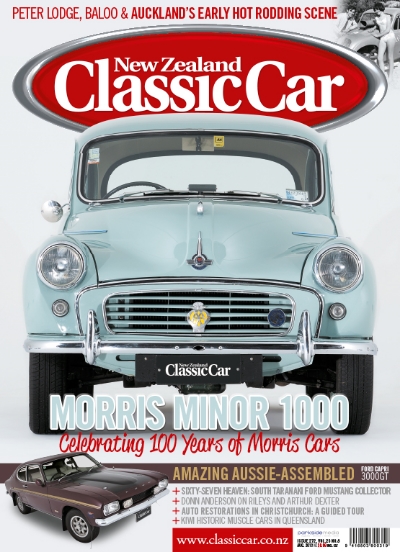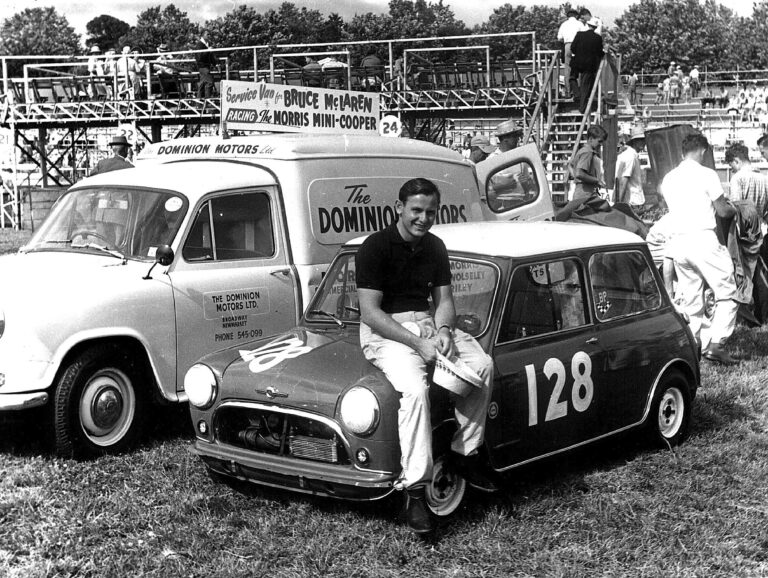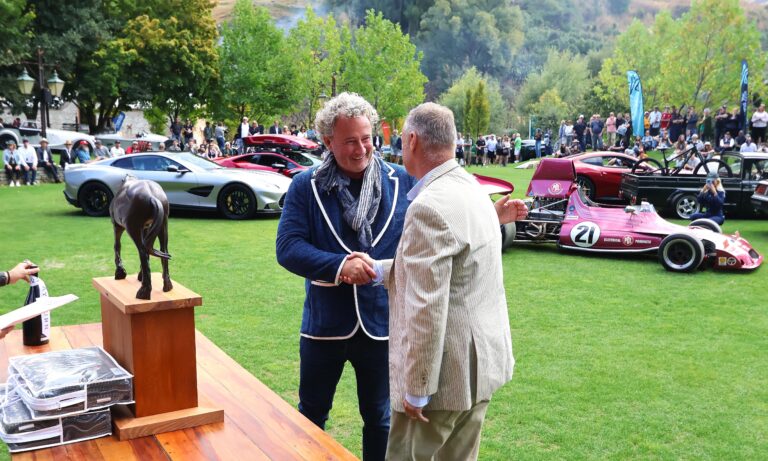
The first Morris Minor (Morrie) was shown to the British public in 1948, 35 years after the company was founded in 1913. It made its debut at the London Motor Show, and was an instant hit.
Designed in the mid 1940s by Alec Issigonis, the Morris Minor boasted a contemporary unit-constructed body, torsion bar front suspension, rack and pinion steering and a low centre of gravity achieved by using small 133mm-size tyres on 14-inch wheels. This innovative design was state of the art for small car development, and years ahead of the prewar engineering that could be found under most other European economy cars of the time.
The original Morris Minor was upgraded in 1952, the Austin-designed overhead valve 803cc engine replacing the original side-valve engine. In 1956 the Morris Minor 1000 appeared with a larger, 948cc overhead valve engine amongst other changes, such as a one-piece front windscreen and a larger rear window. Proper flashing indicators to replace idiosyncratic pop-out trafficator units were fitted to the 1961 model, and in the same year the Morris Minor became the first British car to become a million seller.

In 1962, UK production saw the upgrade of the 948cc engine to a 1098cc motor. However, in New Zealand — with CKD production running slightly behind the UK — the 948cc engine was still being used in the last of the New Zealand–produced sedans. For the same reason, New Zealand production didn’t implement flashing indicators until 1962, a year after the UK-built cars. The sedan ceased production in New Zealand in 1962, but the commercials (van and utility) carried on for some years after that.
The final improvements were made in 1964, and were confined to a two-spoke steering wheel, revised seats and switchgear and the replacement of the pull-start button with a combined starter/ignition switch.
Popular classic
As an everyday classic, the Morris Minor still makes sense. Unlike most classics, you can keep these little cars running almost indefinitely, as every part you will ever need is inexpensive, and readily accessible through numerous parts suppliers worldwide — just one factor that explains why Minors are still so popular today.
The continuing affection for the ‘Moggie’, as it is warmly referred to in Britain, or ‘Morrie’ as it is more commonly known in New Zealand, is reflected in the number of restored and improved Morris Minors still on our roads — as illustrated by the New Zealand registration data featured later in our story.
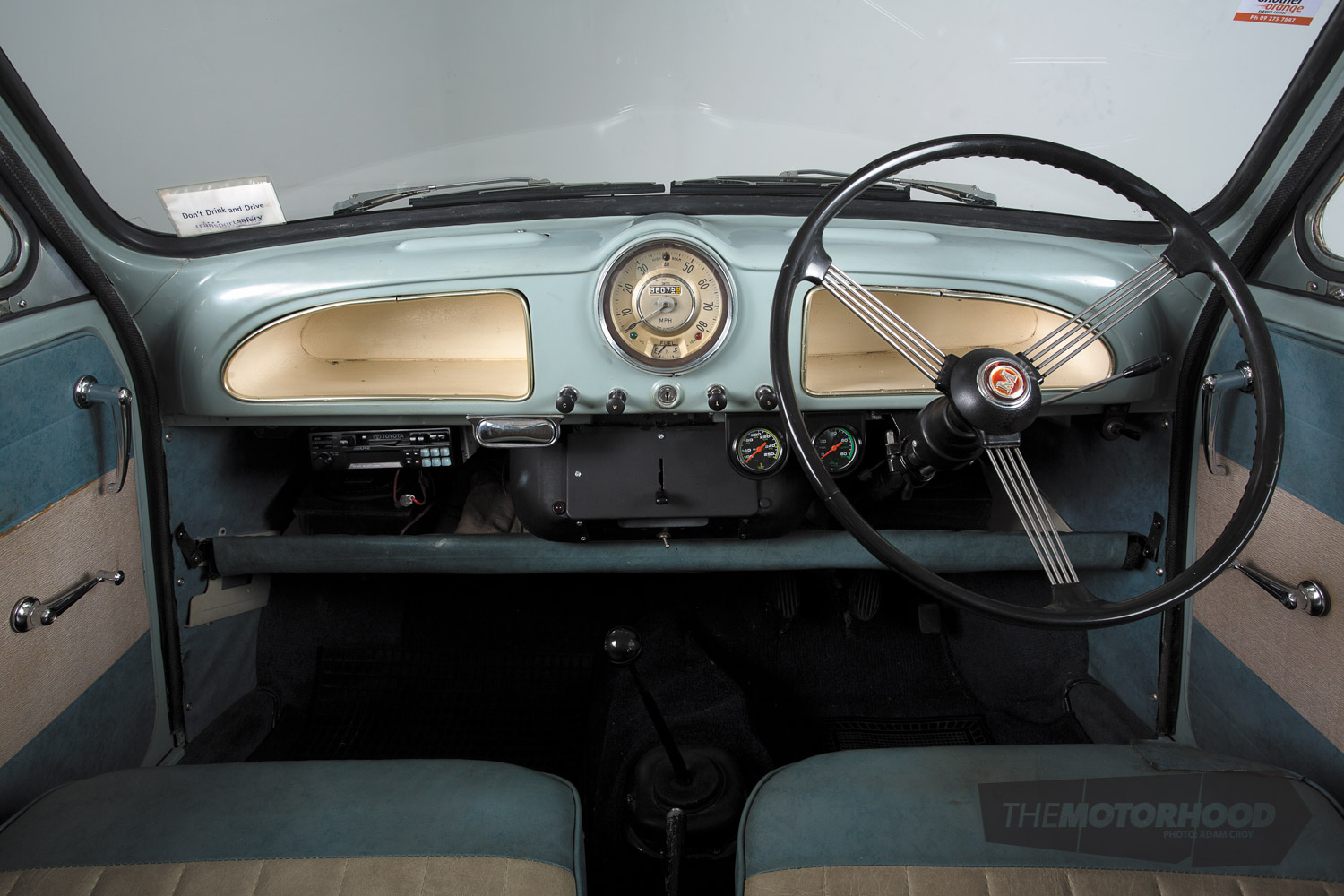
Getting back to the owner of the little beauty featured here, this Morrie’s owner, Bruce Hatrick, developed a passion for the marque when he got his first car in 1967, a 1962 Morris Minor 1000. While Bruce owned that car he was very lucky to have a retired motor mechanic living over the back fence who still did some work at home. He spent quite a bit of time talking with this neighbour, and gained as much information as he could.
In those days there wasn’t the myriad of technological plug-and-play wizardry so prevalent in today’s auto industry, however, Bruce soon learned to tune the engine by vision and sound. During the time he owned the Morrie, he admits he discovered more about it by trial and error through dismantling and reassembling everything he could on his own. This would provide a store of hands-on knowledge that has stood him in good stead over the years. Bruce recalls that he owned that particular car for three years, during which time he replaced the 948cc engine with a new 1098cc engine, as purchased from the local BMC agent, and recalls that the engine swap made a significant difference to the performance of the Morris.
Also during that time, Bruce joined the Northern Sports Car Club (NSCC) and enjoyed attending motorsport events at Pukekohe and Bay Park, as well as being a regular spectator at Waikaraka Park.
The car was sold when Bruce headed off overseas for his big OE, although he kept up his membership of the NSCC.
Committee work
When Bruce returned to New Zealand he purchased a 1970 Ford Escort MkI and installed a 1600GT engine into it, so he could enter club competitions. He soon became more involved in the club’s activities and subsequently served on the NSCC’s committee for some years, being elected club captain in 1977. Bruce was also part of a team that won the NZ Gold Star Trials around that same time, whilst continuing to carry out all his own maintenance on his Escort.
Bruce was an official on the last of the Mobil Economy Runs, and assisted by taking the competitors’ luggage from each stopover point to the next, and helping out with overnight parking and morning starts. One highlight he remembers well is that before starting the event, everyone met at Logan Park (as it was then) in Campbell Road, Greenlane, and he had breakfast at the same table as Denny Hulme.
It wasn’t long before Bruce became more involved in the local rally scene and he was an active member on the NSCC’s rally committee. He stayed involved with the club’s rallying activities even after he’d let his membership lapse, as by this time he had a young family and his time was limited for such activities. What little spare time he did have saw Bruce involved in placing block marshals and timing crews, and he also acted as assistant clerk of course for many events.
However, it wasn’t long before the inevitable became a reality and motorsport was pushed completely by the wayside for a number of years in exchange for suitable community and family activities.

Minor project
Many years later, and by then around nine years ago, Bruce’s neighbour — who already owned a fully restored Cortina MkII — decided to purchase a 1952 Ford Prefect as his next project. Bruce’s wife suggested he might like to follow in that neighbour’s footsteps and look for a similar project. Naturally, Bruce didn’t need much prompting and he was soon on the hunt for something suitable.
He discovered exactly what he was searching for on a local auction site. The car was situated in the South Island, and he spoke to the owner before deciding to purchase it sight unseen based on those phone calls and the owner’s description of the car. Bruce arranged for it to be shipped up to Auckland and it was exactly as described — of course, it was a Morris Minor, a 1962 1000 four-door sedan.
The Morrie’s registration was on hold, so the first thing on the agenda was to get it registered and back on the road. This required the brakes to be repaired and the fitting of a new set of tyres. When Bruce took the car for its WOF check, some rust was discovered in the chassis around the left rear spring hanger. Once this had been rectified, it flew through the recheck and was subsequently re-registered. Bruce owned it for about five years, during which time he installed a rebuilt 1098cc engine and stronger, ribbed gearbox.
Bruce and his wife also joined the Auckland Morris Minor Car Club, and it was only a matter of months before he was asked to join the committee. Since then, as well as serving as a committee member, he has done a stints as both secretary and vice president – only standing down recently, although he continues to maintain the club’s website. Bruce and his wife are also the club’s current magazine editors.
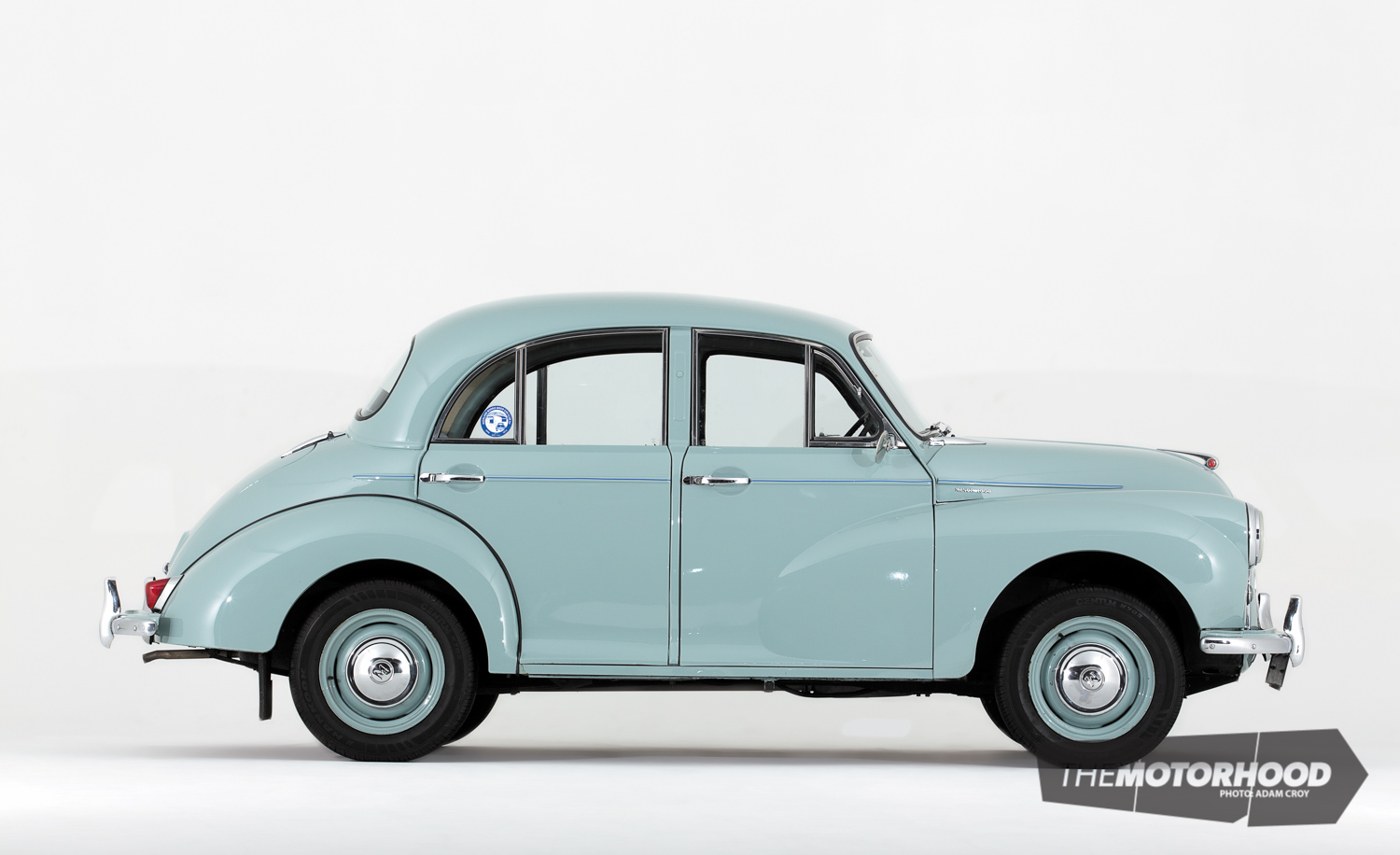
Myrtle
The only reason Bruce sold this Morrie was to purchase another from fellow club member, Mike Harmon, in February 2010. Bruce knew Mike had owned the Minor since June 2002, and that he’d carried out quite a bit of work on it. Bruce was definitely impressed with the way Mike’s Morrie looked. The car had originally been purchased in August 1962, the next owner coming along in April 1965 — and owning the car until 2002.
This 1962 Morris Minor 1000 was completely standard apart from the Morris van rims, which enable the fitment of wider, radial ply tyres and also allow larger eight-inch front drum brakes instead of the original seven-inch items.
It is quite ironic that the year, the letters of the registration number, the colour and even the trim on this car are the same as Bruce’s first Morris Minor 1000 he purchased back in 1967.
Since acquiring this car, all Bruce has done is change over the oil filter mount to allow a spin-on oil filter and replace the clutch and pressure plate.
He admits he thoroughly enjoys driving this lovely Morrie, and is often approached by admirers who just want to talk about the car and their own Morris Minor memories.
Bruce and his wife attended the 2011 Morris Minor Convention held in Paeroa, and entered the car in for judging, achieving second place in their class. Bruce’s Morrie has also been on display at two Ellerslie Concours as part of the Morris Minor Club stand, and he’s attended the Galaxy of Car event at Auckland’s Western Springs several times.
Bruce and his wife have quite aptly nicknamed their car ‘Myrtle’ after the first owner’s Christian name, adding another interesting feature to this wonderful old Morrie.
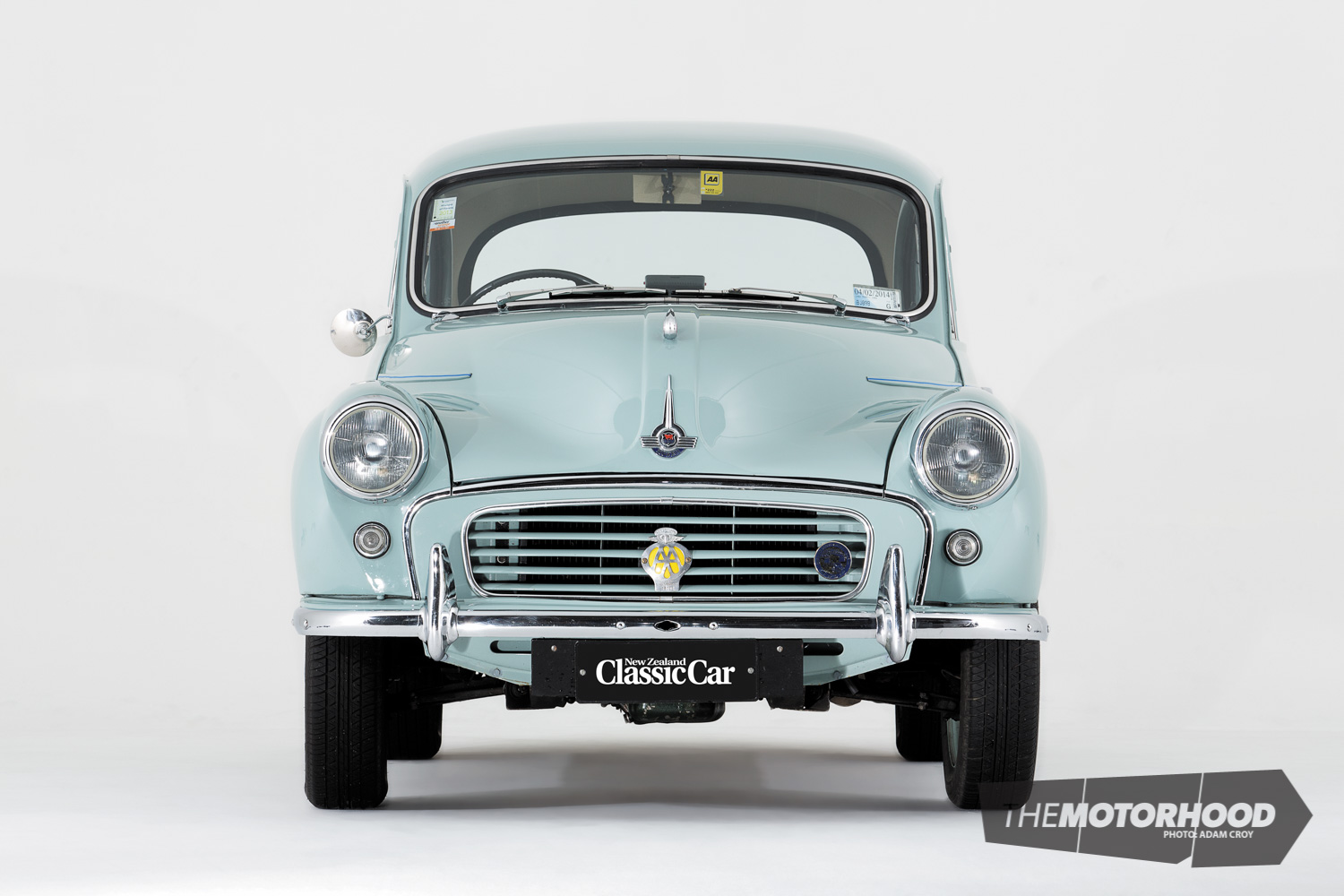
1962 Morris Minor 1000
- Engine: Morris in-line four-cylinder
- Capacity: 948cc
- Bore x stroke: 62.94×76.2mm
- Max power: 27.6kW (37bhp) at 4750rpm
- Max torque: 68Nm at 2500rpm
- Compression: 8.3:1
- Fuel system: SU carburettor
- Transmission: Four-speed manual
- Suspension: (F) independent torsion bar; (R) semi-elliptic leaf springs
- Steering: Rack and pinion
- Brakes: Drum/drum
Dimensions:
- Overall length: 3817mm
- Width: 1524mm
- Height: 1524mm
- Wheelbase: 2194mm
- Kerb weight: 788kg
Performance:
- Max speed: 128kph
- 0–100kph: 26 seconds
- Standing quarter-mile: 23.2 seconds
This article was originally published in New Zealand Classic Car Issue No. 272. You can pick up a print copy or a digital copy of the magazine below:
